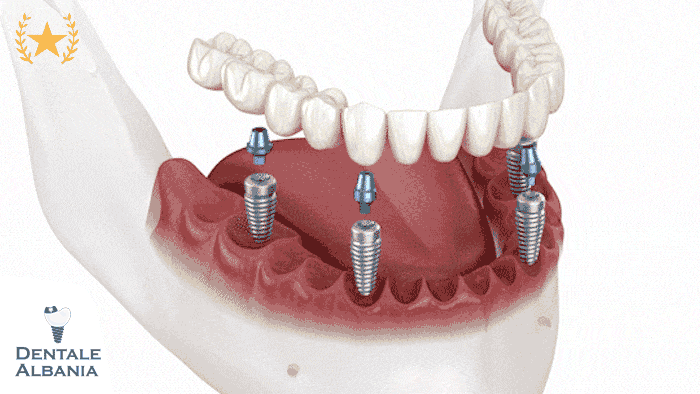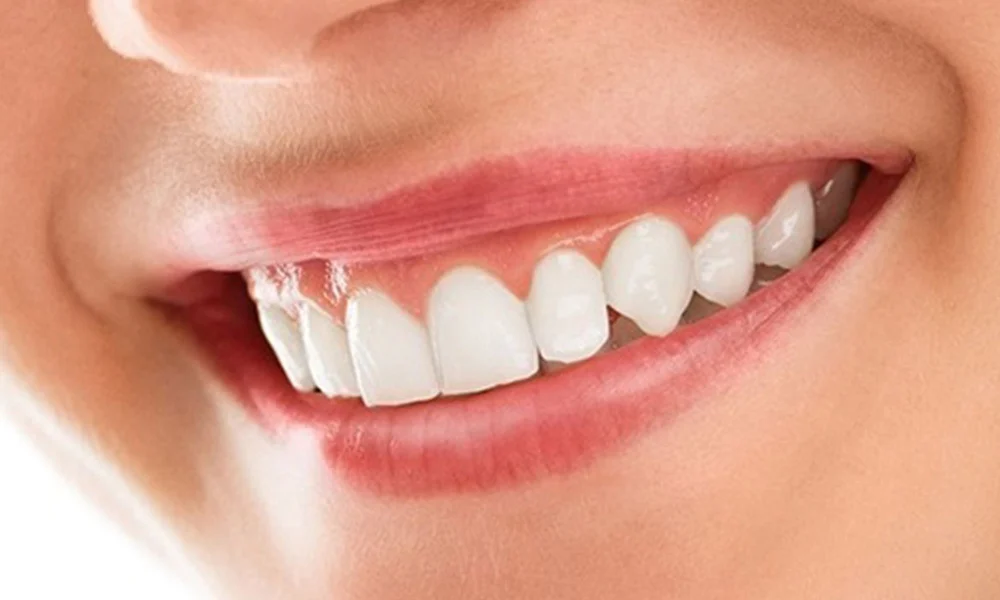Table of Contents
ToggleWhat Is a Smile Makeover and What Does It Include?

A smile makeover is a fully customized cosmetic dental treatment plan designed to dramatically improve the appearance of your smile. It combines multiple procedures tailored to your needs, whether you’re looking to correct discolored, uneven, misaligned, or damaged teeth. Rather than relying on a single solution, a smile makeover offers a holistic transformation that enhances your smile from every angle — including color, symmetry, shape, and even gum line aesthetics.
Unlike standard cosmetic fixes, a smile makeover takes your facial features, skin tone, and lip line into account to ensure that the end result looks natural, youthful, and in harmony with your overall appearance. It can be as simple as a whitening and bonding touch-up or as comprehensive as a full mouth reconstruction using veneers, crowns, and implants.
So, what exactly does a smile makeover include?
- Porcelain or ceramic veneers: These thin shells are bonded to the front surface of the teeth to instantly correct color, shape, spacing, and alignment issues.
- Teeth whitening: A professional-grade whitening treatment is often used to brighten natural teeth, especially if veneers will only cover the top front ones.
- Composite bonding: This is used to repair chips, cracks, and minor gaps in teeth using a tooth-colored resin material.
- Orthodontics (Invisalign or Inman aligner): If alignment is a concern, short-term orthodontic options can be included to straighten teeth before placing veneers.
- Gum contouring: A laser or surgical reshaping of the gum line may be performed to eliminate a “gummy smile” and balance proportions.
- Crowns and bridges: These are used when teeth are severely damaged or missing.
- Dental implants: For replacing missing teeth permanently and naturally.
Every smile makeover starts with a detailed consultation and digital smile design, where the dentist maps out your new smile using images, software, and sometimes 3D models. You may even try out a trial smile with temporary restorations before the final step is taken.
Whether you need a subtle refresh or a complete transformation, a smile makeover gives you the flexibility to combine treatments, set your own goals, and walk away with a confident, natural-looking result tailored specifically to you.
What Happens During the Smile Makeover Process?
The smile makeover process is a multi-step journey tailored to your dental goals, facial structure, and aesthetic preferences. Unlike a one-size-fits-all solution, this process is highly personalized — blending science, artistry, and advanced dental technology to achieve your ideal smile.
Here’s how the process typically unfolds:
- Initial Consultation
Everything starts with a one-on-one consultation with a cosmetic dentist. This is your opportunity to share what you’d like to change — be it tooth color, shape, gaps, alignment, or gum exposure. The dentist will perform a full oral examination, take photos, and assess your teeth and gums to determine what’s possible. - Digital Smile Design (DSD)
One of the most exciting parts of a smile makeover is the digital planning stage. Using high-resolution images and design software, your dentist creates a simulation of your new smile. This visual preview helps you see the potential outcome before any work begins — and you’ll have a say in every detail. - Smile Simulation & 3D Prototype
In more advanced clinics, your design may be transformed into a 3D prototype or trial smile using temporary restorations. This step allows you to test-drive your new smile in real life, evaluate the aesthetics, and request any changes. - Treatment Plan Execution
Once your design is finalized, your dentist begins the treatments included in your plan. This could involve teeth whitening, bonding, orthodontics, or preparing teeth for veneers or crowns. Each treatment is strategically timed for optimal healing and long-term success. - Trial Smile and Adjustments
Temporary veneers or restorations may be fitted first — allowing you to get used to your new look. You can review the color, shape, and feel, then give feedback before final restorations are crafted. - Final Smile Placement
After adjustments are made, your permanent restorations — often handcrafted ceramic veneers or crowns — are bonded into place. These are carefully polished and adjusted to ensure proper bite, comfort, and aesthetics. - Follow-up and Maintenance
Your dentist will schedule follow-up appointments to make sure everything settles properly. Long-term success often involves periodic checkups and hygiene appointments.
This step-by-step approach ensures that your smile makeover is not only visually stunning but functionally sound, providing results that look great and last for years.
How Much Does a Smile Makeover Cost in the UK and Abroad?
The cost of a smile makeover can vary widely depending on the specific treatments involved, the experience of the dentist, the materials used, and — importantly — your location. Whether you’re in London, another UK city, or considering dental tourism abroad, understanding the cost factors helps you make an informed decision.
Average Smile Makeover Costs in the UK
In the UK, the price of a smile makeover typically ranges from £3,000 to over £20,000, depending on how extensive the treatment is. Here’s a general breakdown of what contributes to the cost:
- Porcelain Veneers: £500 – £1,000 per tooth
- Composite Bonding: £150 – £400 per tooth
- Teeth Whitening: £300 – £700
- Gum Contouring: £150 – £1,000
- Crowns & Bridges: £400 – £900 per unit
- Dental Implants: £2,000 – £2,500 per implant
- Orthodontic Aligners (like Invisalign): £2,000 – £5,000
A full smile makeover involving veneers on 8–10 top teeth (and possibly 8–10 bottom teeth) is often the most costly but also provides the most transformative result. The more complex the case (missing teeth, bite issues, multiple procedures), the higher the investment.
What Is the Least Expensive Smile Makeover Option?
For those on a tighter budget, a mini smile makeover is a more affordable route. These typically include:
- Tooth whitening
- Composite bonding on the most visible teeth
- Light reshaping or contouring
This option often costs between £500 to £2,000 and offers a noticeable improvement without the commitment of veneers or surgery.
Can You Get Finance for a Smile Makeover?
Yes — many UK cosmetic dental clinics now offer flexible finance options, including:
- 0% interest payment plans
- Monthly installments up to 5 years
- Pay-as-you-go treatment phases
This makes it easier for patients to access smile makeover treatments without needing the full amount upfront.
How Much Does a Smile Makeover Cost Abroad?
In countries like Turkey, Hungary, and Poland, smile makeovers can cost 30–70% less than in the UK. For example:
- Porcelain veneers in Turkey: £150 – £350 per tooth
- Full smile makeover: £2,000 – £6,000 (including hotels/transfers)
However, patients should consider aftercare limitations, travel risks, and quality standards before opting for dental tourism. In the UK, you’re protected by regulatory bodies, local follow-up care, and often guarantees on the work.
How Much Does a Smile Makeover Cost in Albania?
Choosing to undergo a smile makeover in Albania has become increasingly popular among patients from the UK, Italy, and across Europe — and the main reason is clear: exceptional quality at a significantly lower cost.
In Albania, you can expect to save 50–70% compared to prices in the UK or Western Europe, without compromising on technology, materials, or expertise. Let’s break down the typical costs, what influences the final price, and why so many patients are opting for dental tourism in Albania.
✅ Average Prices for Smile Makeover Treatments in Albania
| Treatment Type | Average Cost in Albania (EUR) | Equivalent UK Cost (EUR) |
|---|---|---|
| Porcelain Veneers (per tooth) | €150 – €300 | €600 – €1,000 |
| Composite Bonding (per tooth) | €80 – €150 | €200 – €400 |
| Teeth Whitening | €150 – €250 | €400 – €700 |
| Dental Crowns | €200 – €350 | €500 – €900 |
| Dental Implants (per unit) | €600 – €850 | €1,800 – €2,500 |
| Gum Contouring | €100 – €200 | €300 – €1,000 |
| Full Smile Makeover (8–10 veneers + whitening) | €1,800 – €3,500 | €6,000 – €12,000 |
Note: Prices may vary slightly depending on the clinic, the number of teeth treated, and materials used (e.g. Emax veneers, zirconia, ceramic).
✅ What Influences the Cost of a Smile Makeover in Albania?
Several factors determine your final price:
-
Number of teeth involved (e.g. 6 vs. 10 veneers)
-
Type of veneers (composite vs. Emax ceramic)
-
Additional treatments (implants, crowns, gum lifts)
-
Digital smile design and simulations
-
Clinic reputation and dentist’s experience
-
Whether full travel packages are included
Some top-rated Albanian clinics offer all-inclusive packages for international patients, covering:
-
Treatment
-
Airport transfers
-
Accommodation (3–5 nights)
-
English- or Italian-speaking staff
-
Follow-up care
This bundled approach offers transparency and convenience, especially for those flying in for short treatment cycles.
✅ Is It Worth It to Travel to Albania for a Smile Makeover?
Yes — for many patients, Albania offers the perfect balance of cost, quality, and convenience. With internationally trained dentists, modern clinics equipped with 3D imaging and CAD/CAM technology, and short waiting times, Albania competes directly with destinations like Turkey or Hungary.
Combine this with the opportunity to visit Tirana’s vibrant city life or the beautiful Albanian Riviera, and your smile makeover can feel like a smart investment — and a holiday.
Who Is an Ideal Candidate for a Smile Makeover?

Not everyone is born with a perfect smile — and that’s exactly where a smile makeover comes in. But while almost anyone can benefit from cosmetic dental treatments, there are specific factors that make someone an ideal candidate for a smile makeover.
Here’s what dentists typically look for:
- You’re unhappy with the appearance of your smile
If you’re self-conscious about discolored, misaligned, chipped, worn down, or missing teeth, you’re a prime candidate. Whether the issue is subtle or severe, a smile makeover can offer life-changing improvements. - You have healthy gums and good oral hygiene
A healthy foundation is key. Smile makeover procedures are most successful on patients without active gum disease or untreated decay. Before cosmetic work begins, any necessary restorative treatments (e.g., deep cleaning, fillings) are completed. - You’re looking for a long-term solution
Smile makeovers are for patients who want durable, lasting results. If you’re committed to caring for your teeth afterward (brushing, flossing, attending checkups), you’ll enjoy your new smile for years. - You have realistic expectations
While the results can be dramatic, it’s important to understand the limitations of cosmetic dentistry. An ideal candidate trusts their dentist, communicates their goals clearly, and understands the treatment plan step-by-step.
Who Is Not a Good Candidate for a Smile Makeover?
Some individuals may not be suitable candidates — at least not initially. These include:
- Patients with active periodontal disease
Gum disease needs to be treated before veneers, implants, or other cosmetic procedures can be done. - People with poor oral hygiene habits
Neglecting oral health can quickly ruin even the most beautiful smile makeover. Consistency in brushing, flossing, and checkups is essential. - Severe dental phobia without support
Anxiety is common, and many clinics offer solutions like sedation. But extreme dental phobia may need to be addressed before any major procedures can begin. - Patients with unrealistic expectations
A smile makeover can do a lot, but it’s not magic. Those expecting celebrity-level transformation without understanding the process might be disappointed.
What Age Is Best for a Smile Makeover?
There’s no “perfect” age — but most cosmetic dentists recommend waiting until after full dental development (typically age 18+). However, smile makeovers are increasingly popular with adults in their 30s, 40s, and even 60s.
In fact, many patients seek treatment ahead of major life events like weddings, career changes, or post-divorce transformations. What matters most is your oral health and motivation, not your age.
Is a Smile Makeover Safe and Worth It?
A smile makeover is not just about aesthetics — it’s an investment in your confidence, self-esteem, and even long-term oral health. But like any elective dental procedure, it’s natural to ask: Is it safe? Is it really worth it?
Let’s break down both parts of the question.
✅ Is a Smile Makeover Safe?
Yes — when performed by a qualified and experienced cosmetic dentist, a smile makeover is generally very safe. These procedures are minimally invasive when done properly and use biocompatible materials designed to work in harmony with your natural teeth and gums.
Here’s why they’re considered safe:
- Modern materials and techniques
From no-prep veneers to laser gum contouring, today’s smile makeover techniques are far more gentle and refined than older methods. - Custom treatment planning
Before any work begins, a full consultation, oral health assessment, and digital design are performed. This ensures you’re a suitable candidate and that the treatment won’t compromise your dental health. - Low risk of complications
When gums are healthy and the dentist follows best practices, complications are rare. Patients may experience temporary sensitivity or mild soreness, but these usually resolve quickly.
However, risks do exist if:
- You skip proper oral hygiene after treatment
- You undergo procedures abroad without proper vetting
- You receive excessive enamel removal for veneers (common in low-cost clinics)
Always choose a trusted professional and ask about the dentist’s experience, materials used, and any guarantees or aftercare policies.
✅ Is a Smile Makeover Worth It?
For most patients — absolutely.
Here’s why many say it’s one of the best decisions they’ve made:
- Improved confidence and self-image
Your smile is one of the first things people notice. Feeling good about it can impact how you speak, laugh, and even show up in social or professional situations. - Career and social benefits
Studies show that a bright, aligned smile can be perceived as a sign of health, success, and confidence — all of which can open new doors. - Better oral function
A smile makeover isn’t just about looks. Properly aligned teeth are easier to clean, function better, and reduce wear and tear on the jaw. - Anti-aging effect
A youthful smile can take years off your appearance, especially when it replaces worn, discolored, or missing teeth. - Long-term value
While the upfront cost may seem high, the long-lasting benefits often outweigh the expense — especially when proper care extends the results for 10–15 years or more.
Ultimately, a smile makeover is not just about vanity — it’s about feeling like the best version of yourself. And for many, that’s worth every penny.
What Does a Smile Makeover Typically Involve?

A smile makeover is not a single procedure — it’s a combination of treatments designed to improve every aspect of your smile, from color and alignment to shape and symmetry. What’s included depends entirely on your needs and goals, but most smile makeovers involve a tailored mix of cosmetic and restorative dentistry.
Here’s an overview of the treatments most commonly involved in a complete smile makeover:
- Porcelain or Ceramic Veneers
Veneers are ultra-thin shells custom-made to fit over the front of your teeth. They correct a wide range of cosmetic concerns, such as chips, gaps, discoloration, and uneven shapes. Veneers are often the cornerstone of a full smile makeover due to their transformative results. - Teeth Whitening
Professional whitening treatments are either done in-office or via take-home kits prescribed by your dentist. Whitening may be used on its own or to brighten natural teeth that won’t be covered with veneers or crowns. - Composite Bonding
This involves applying a tooth-colored resin to reshape teeth, repair small chips or cracks, or close minor gaps. It’s a more affordable, reversible option compared to veneers, often used in mini smile makeovers. - Crowns and Bridges
If you have damaged or heavily restored teeth, dental crowns may be used to strengthen and restore function while also improving appearance. Bridges are used to replace one or more missing teeth. - Dental Implants
These are titanium posts surgically inserted into the jawbone to support a replacement tooth (or teeth). They are often part of more complex smile makeovers where missing teeth need a permanent solution. - Gum Contouring or Gum Lifts
A “gummy smile” can be corrected with gum reshaping. This is often done with laser dentistry to remove excess gum tissue and create a more balanced tooth-to-gum ratio. - Orthodontics
Teeth straightening is sometimes included using Invisalign, lingual braces, or even Inman aligners for rapid minor corrections. In many cases, teeth are aligned prior to placing veneers for optimal results.
Does a Smile Makeover Include Teeth Straightening?
Yes — if alignment is one of your concerns. Teeth straightening is often the first step in a makeover for patients with crooked, gapped, or overlapping teeth. Many dentists now offer clear aligners like Invisalign, which are discreet and effective over 6–18 months. For minor corrections, Inman aligners can work in just 6–12 weeks.
Is There Surgery to Make Your Smile More Attractive?
Sometimes, yes. Surgical procedures may be included in advanced cases:
- Gum surgery to correct a high or uneven gum line
- Dental implants to replace missing teeth
- Bone grafting if there’s insufficient bone to place implants
These procedures are safe and routine in cosmetic dentistry when performed by experienced clinicians, and they are only recommended when necessary for function or aesthetics.
Whether you’re aiming for a small refresh or a Hollywood-level transformation, the beauty of a smile makeover is that it’s fully customizable — tailored not just to your teeth, but to your entire face, lifestyle, and goals.
How Long Does a Smile Makeover Take from Start to Finish?
The timeline of a smile makeover depends entirely on the procedures involved, your oral health status, and how complex your individual case is. While some smile makeovers can be completed in just a few hours, others may take weeks or even several months — especially if orthodontics, implants, or surgery are included.
Here’s what to expect at each phase:
- Initial Consultation (1–2 appointments)
The process begins with a clinical evaluation, photographs, x-rays, and a conversation about your goals. At this stage, your dentist may also create a digital smile simulation to show you the potential results. This step usually takes one or two visits. - Smile Design and Planning (Few days to 1 week)
Using digital tools, a custom smile design is created. In many cases, a 3D model or “trial smile” is made so you can preview your new look. Adjustments can be requested before anything permanent is done. - Treatment Phase (Varies by treatment)
This is where the bulk of time is spent. It can include multiple procedures across several visits:- Teeth Whitening: 1 session in-clinic or 1–2 weeks with take-home kits
- Composite Bonding: Done in 1 visit
- Porcelain Veneers: Usually 2–3 appointments over 2–4 weeks
- Crowns & Bridges: 2 appointments over 1–2 weeks
- Dental Implants: 3–6 months total (including healing and placement)
- Orthodontics (Invisalign): 4–18 months, depending on the case
- Gum Contouring: 1 visit, with healing in 1–2 weeks
How Long Does It Take to See Results from a Smile Makeover?
In many cases, results are immediate — especially with bonding, whitening, and temporary veneers. Once your final veneers or restorations are fitted, your smile is instantly transformed. Patients often leave the clinic the same day with a completely new appearance.
For more complex smile makeovers involving orthodontics or implants, the transformation is gradual but long-lasting. While these timelines are longer, the final results are often even more life-changing.
What Is the Recovery Time After a Smile Makeover?
Recovery is usually quick and minimal for most cosmetic procedures:
- Whitening and bonding require no downtime.
- Veneers may cause mild sensitivity for a few days.
- Gum contouring typically heals in under 2 weeks.
- Implants and oral surgery require a few days of rest, with full healing over months.
Your dentist will provide aftercare instructions and schedule follow-ups to monitor your progress.
Whether you’re on a tight deadline for a special event, or willing to commit to a longer timeline for comprehensive results, a smile makeover can be adapted to fit your schedule and needs — delivering a new smile worth waiting for.
How Many Veneers Are Needed for a Smile Makeover?
One of the most common questions patients ask is: how many veneers do I need for a smile makeover? The answer depends on how many teeth are visible when you smile and what aesthetic changes you want to achieve. Typically, dentists use the “4-8-10 rule” to guide veneer placement — aiming to enhance the teeth most prominent in your smile.
Here’s a closer look at the typical approach:
- 4 veneers: This is usually reserved for patients with very minor cosmetic concerns and a naturally narrow smile. Veneers are applied to the four upper front teeth for small enhancements in symmetry and brightness.
- 6 veneers: A popular choice for a natural, yet noticeably improved smile. This covers the four central teeth and the two adjacent canines, creating a smoother transition across your visible smile line.
- 8–10 veneers: This is the most common approach in full smile makeovers. It covers all the upper teeth visible when you smile — from the center to the premolars — ensuring a consistent shade, shape, and alignment.
- Lower veneers: In some makeovers, especially when the lower teeth are highly visible, an additional 8–10 veneers may be applied to the bottom arch for balance and uniformity.
Can You Get Veneers on Just 6 Teeth?
Yes — many patients opt for 6 veneers if their smile shows only the front teeth and their natural side teeth blend well. This is more cost-effective and still offers a significant improvement. However, the dentist must ensure that the contrast between veneered and natural teeth isn’t noticeable, especially in terms of color and shape.
How Much Do Full Veneers Cost in the UK?
In the UK, the cost per veneer ranges from £500 to £1,200 depending on the material and the dentist’s expertise. For a full set of 8–10 upper veneers, the total can range between £4,000 and £10,000.
Pricing depends on:
- The number of veneers needed
- Whether they are porcelain, ceramic, or composite
- The clinic’s location (e.g., central London vs. regional)
- Any additional procedures, like whitening or gum contouring
Many clinics offer finance plans, allowing you to spread the cost over several months or years.
How Much Do Full Veneers Cost in Albania?
If you’re considering transforming your smile with full dental veneers, Albania offers one of the most cost-effective solutions in Europe — without sacrificing quality, safety, or aesthetics. With modern clinics, internationally trained dentists, and state-of-the-art materials, Albania has become a top dental tourism destination for patients seeking affordable yet high-end veneer treatments.
But how much do full veneers really cost in Albania?
✅ Average Cost of Full Veneers in Albania
In Albania, the price of porcelain or ceramic veneers typically ranges from €150 to €300 per tooth, depending on:
-
The clinic’s location and reputation
-
The experience of the cosmetic dentist
-
The material used (e.g., Emax, zirconia, feldspathic porcelain)
-
The number of veneers placed
-
Whether digital smile design is included
Here’s a general guide to what you can expect:
| Number of Veneers | Estimated Price Range (EUR) |
|---|---|
| 4 Veneers | €600 – €1,200 |
| 6 Veneers | €900 – €1,800 |
| 8 Veneers | €1,200 – €2,400 |
| 10 Veneers | €1,500 – €3,000 |
| 16–20 Veneers (Full Mouth) | €3,000 – €5,000 |
Compared to countries like the UK (where a single veneer can cost up to €1,000), a full smile makeover with veneers in Albania can save you over 60–70%, even when factoring in travel and accommodation costs.
✅ What’s Included in the Veneer Cost in Albania?
Many Albanian dental clinics offer all-inclusive veneer packages designed for international patients. These often cover:
-
Initial consultation and digital smile design
-
Dental impressions and 3D preview (mock-up or trial smile)
-
Tooth preparation and placement of temporary veneers
-
Final Emax or zirconia veneers crafted by in-house ceramists
-
Local anesthesia and pain management
-
Follow-up appointments
-
Airport pick-up, hotel accommodation, and transfers (in premium packages)
✅ Why Veneers in Albania Are So Affordable
Albania’s dental clinics maintain high European standards but benefit from lower operational costs, lower wages, and government investment in medical tourism. This allows them to deliver top-tier treatments using world-class materials — at a fraction of the price patients would pay in Western Europe.
Additionally, clinics often operate on shorter timelines, completing full veneer treatments in 4 to 7 days, which is ideal for patients flying in for a short stay.
Whether you’re looking to correct chips, gaps, discoloration, or reshape your smile entirely, full veneers in Albania offer the perfect balance of affordability, aesthetics, and comfort — all while enjoying a new country and saving thousands.
What Are the Benefits of a Smile Makeover?
A smile makeover offers far more than just cosmetic improvements — it can transform how you feel, how you interact with others, and how confidently you navigate your daily life. While the treatments are tailored to your specific needs, the benefits of a well-designed smile makeover are often life-changing.
Here are the key advantages:
- Boosted Confidence and Self-Esteem
A bright, aligned, and symmetrical smile can instantly boost how you feel about yourself. Many patients report feeling more outgoing, more photogenic, and more comfortable in social or professional situations. - More Youthful Appearance
Cosmetic issues like worn down, discolored, or missing teeth can add years to your face. A smile makeover restores volume, balance, and brightness — often taking 5 to 10 years off your appearance. - Enhanced Oral Function
Smile makeovers often correct bite alignment, improve chewing ability, and fix worn or damaged teeth. It’s not just about looking good — it’s also about feeling good and functioning better. - Customizable and Fully Personalised
No two smiles are the same, and neither are the treatment plans. Your makeover is tailored to your facial features, dental condition, and personal goals — whether you want subtle refinements or dramatic changes. - Immediate Results with Long-Term Value
Procedures like veneers, whitening, and bonding deliver visible results quickly. With proper care, these results can last for many years, making the investment worthwhile both aesthetically and financially. - Professional and Social Benefits
A confident smile has been linked to increased employability, stronger first impressions, and better communication. It’s a subtle but powerful asset in both personal and professional settings. - Flexible Budgeting Options
Smile makeovers can be scaled to fit your budget — from mini makeovers (e.g., whitening + bonding) to full reconstructions. Most reputable clinics offer 0% finance plans and phased treatment options. - Emotional and Psychological Uplift
For many, the biggest change isn’t physical — it’s emotional. A new smile often triggers a more positive self-image, helping patients overcome past insecurities tied to their teeth.
Whether you’re correcting years of dental wear or simply refreshing your look, the benefits of a smile makeover extend far beyond the mouth — impacting how you feel, live, and show up in the world.
Frequently Asked Questions About Smile Makeover

What Does a Smile Makeover Include?
A smile makeover includes a bespoke combination of cosmetic and restorative dental treatments, carefully selected to enhance the appearance, symmetry, and overall harmony of your smile. The exact procedures involved will vary from person to person based on their dental needs, smile goals, and budget.
Here’s what’s commonly included in a smile makeover:
- Porcelain or Ceramic Veneers
These thin, custom-made shells are bonded to the front of the teeth to correct issues like discoloration, chips, gaps, and uneven shapes. They’re one of the most transformative and popular elements in a smile makeover. - Professional Teeth Whitening
To brighten your smile, in-office or take-home whitening treatments are often used either alone or alongside veneers to match and enhance natural teeth not being covered. - Composite Bonding
A quick, non-invasive procedure that uses resin to correct minor flaws like chips, cracks, or small gaps. Ideal for enhancing one or two specific teeth. - Gum Contouring
If your smile shows too much gum or if your gum line is uneven, a laser or surgical gum lift can be included to reshape the gumline and balance the proportions. - Orthodontics (e.g. Invisalign or Inman Aligners)
Mild to moderate alignment issues can be corrected with clear aligners, often as a preparatory step before veneers or bonding for a more natural finish. - Dental Crowns and Bridges
Used when teeth are structurally compromised or missing, crowns and bridges restore both function and appearance. - Dental Implants
For missing teeth, implants may be placed as a long-term solution. These look and function like real teeth and are often included in full mouth reconstructions. - Smile Design and Trial Smile
Using digital software and sometimes 3D models, your dentist will simulate your future smile. You may also test temporary versions before committing to the final look.
A smile makeover is always custom-designed, so no two treatment plans are the same. Your dentist will guide you through the options based on what will help you achieve the smile you’ve always wanted — safely, comfortably, and beautifully.
How Long Does a Full Smile Makeover Take?
The duration of a full smile makeover depends entirely on the complexity of the case, the types of treatments involved, and your personal oral health condition. Some smile makeovers can be completed in just a few days, while others may unfold over several months.
Here’s a breakdown of what to expect:
- Quick Transformations (1 day to 2 weeks)
If your makeover involves only teeth whitening and composite bonding, the entire transformation can be completed in one or two appointments. Even porcelain veneers can sometimes be prepared and placed within 7–14 days, depending on the lab turnaround time and number of veneers. - Moderate Cases (3–6 weeks)
More comprehensive makeovers — involving veneers for 8–10 teeth, gum contouring, or a combination of bonding and crowns — typically require 2 to 3 appointments spaced over several weeks. This allows time for smile design, trial smile fitting, lab fabrication, and final placement. - Complex or Full Mouth Reconstructions (2–6+ months)
If your makeover includes dental implants, orthodontics (e.g. Invisalign), or full arch restorations, the timeline extends significantly. For example:- Implants require healing time (osseointegration), often taking 3–6 months.
- Invisalign or aligners may take 4–18 months depending on the alignment needs.
- Design & Consultation Phase (1–2 visits)
Before treatment begins, there’s typically a consultation and planning phase, including dental imaging, digital smile simulations, and temporary “trial smiles.” This phase ensures that your goals are clearly defined and that the outcome is fully predictable. - Recovery Time
Most non-surgical treatments (veneers, whitening, bonding) involve little to no downtime. However, surgical procedures like implant placement may require a few days to a week of rest and healing.
Every smile makeover is uniquely tailored to your needs, so your timeline will be different from someone else’s. The best way to get an accurate estimate is through a consultation with a cosmetic dentist, where your treatment plan and timeline can be mapped out in detail.









